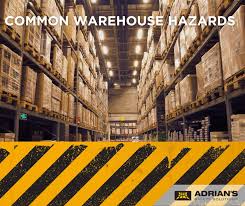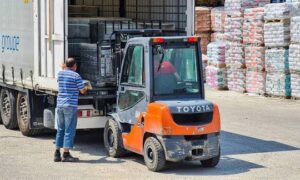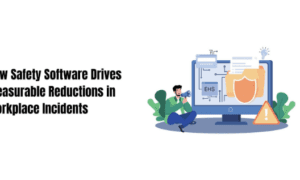Warehouse safety is a critical aspect of operations in any logistics or supply chain environment. The nature of warehouse work often involves heavy machinery, large volumes of inventory, and a fast-paced atmosphere, all of which can contribute to a heightened risk of accidents and injuries. Ensuring a safe working environment is not merely a regulatory requirement; it is a fundamental responsibility that affects the well-being of employees, the efficiency of operations, and the overall success of the business.
A safe warehouse minimizes the likelihood of accidents, which can lead to costly downtime, increased insurance premiums, and potential legal liabilities. Moreover, prioritizing safety in the warehouse fosters a culture of care and responsibility among employees. When workers feel that their safety is valued, they are more likely to be engaged and productive.
This sense of security can lead to lower turnover rates, as employees are more inclined to stay with an organization that prioritizes their health and safety. Additionally, a strong safety record can enhance a company’s reputation, making it more attractive to potential clients and partners who value corporate responsibility. In an era where consumers are increasingly aware of ethical practices, demonstrating a commitment to safety can be a significant competitive advantage.
Common Warehouse Safety Hazards
Material Handling Risks
Employees frequently lift, carry, and move heavy items, which can result in musculoskeletal injuries if proper techniques are not employed. For instance, lifting heavy boxes without using ergonomic principles can lead to back injuries or strains. Additionally, the use of forklifts and pallet jacks introduces risks associated with collisions and tip-overs, particularly in crowded aisles or when operators are not adequately trained.
Slips, Trips, and Falls
These incidents can occur due to wet floors, uneven surfaces, or cluttered walkways. For example, if a spill is not promptly cleaned up or if boxes are left in aisles, employees may easily trip and sustain injuries. Furthermore, inadequate safety mats in warehouses can exacerbate these risks by making it difficult for workers to see potential hazards.
Hazardous Materials and Other Risks
The presence of hazardous materials also poses a threat; chemicals used for cleaning or maintenance can lead to respiratory issues or skin irritations if proper handling procedures are not followed.
Cost-effective Safety Solutions
Implementing effective safety solutions in a warehouse does not necessarily require a substantial financial investment. Many cost-effective strategies can significantly enhance safety without straining budgets. One such approach is the use of signage and visual aids.
Clear signage indicating hazards, proper lifting techniques, and emergency exits can serve as constant reminders for employees to remain vigilant about their surroundings. Additionally, floor markings can delineate safe walkways and areas where equipment operates, reducing the likelihood of accidents. Another economical solution is the adoption of regular safety audits and inspections.
By conducting routine checks of equipment, storage practices, and overall workplace conditions, management can identify potential hazards before they result in accidents. Engaging employees in these audits not only empowers them but also fosters a sense of ownership over their safety environment. Furthermore, investing in basic personal protective equipment (PPE), such as gloves, helmets, and non-slip footwear, can provide an added layer of protection without incurring significant costs.
Implementing Safety Measures
The successful implementation of safety measures in a warehouse requires a systematic approach that involves planning, execution, and continuous evaluation. Initially, it is essential to conduct a comprehensive risk assessment to identify specific hazards unique to the facility. This assessment should involve input from employees at all levels since they often have firsthand knowledge of potential risks that may not be immediately apparent to management.
Once hazards are identified, organizations should develop a detailed safety plan that outlines specific measures to mitigate these risks. This plan should include protocols for equipment operation, emergency response procedures, and guidelines for safe material handling. It is crucial that this plan is communicated effectively to all employees through meetings, training sessions, and accessible documentation.
Regularly reviewing and updating the safety plan ensures that it remains relevant as operations evolve or new hazards emerge.
Training and Education for Warehouse Staff
Training and education are cornerstones of an effective workplace safety program. Employees must be well-informed about the specific hazards they may encounter and the best practices for mitigating those risks. Comprehensive training programs should cover topics such as proper lifting techniques, safe operation of machinery, and emergency response protocols.
For instance, forklift operators should undergo rigorous training that includes both theoretical knowledge and practical assessments to ensure they can operate equipment safely. Moreover, ongoing education is vital for maintaining safety awareness among staff. Regular refresher courses can help reinforce safe practices and keep employees updated on any changes in regulations or company policies.
Incorporating hands-on training sessions allows workers to practice skills in a controlled environment before applying them on the job. Additionally, fostering an open dialogue about safety encourages employees to voice concerns or suggest improvements based on their experiences.
Benefits of Investing in Warehouse Safety
Reduced Workplace Injuries and Accidents
One of the most immediate advantages is the reduction in workplace injuries and accidents. Fewer incidents translate into lower medical costs and reduced workers’ compensation claims, which can significantly impact a company’s bottom line.
Enhanced Employee Morale and Productivity
Furthermore, a safe working environment enhances employee morale and productivity; when workers feel secure in their surroundings, they are more likely to focus on their tasks without the distraction of potential hazards. Additionally, a strong commitment to safety can enhance an organization’s reputation within the industry and among customers.
A Sustainable Business Model
This positive reputation can also lead to increased customer loyalty; clients are more inclined to partner with businesses that demonstrate social responsibility and care for their workforce. Ultimately, investing in warehouse safety is not just about compliance; it is about fostering a sustainable business model that prioritizes people while driving operational excellence.



































